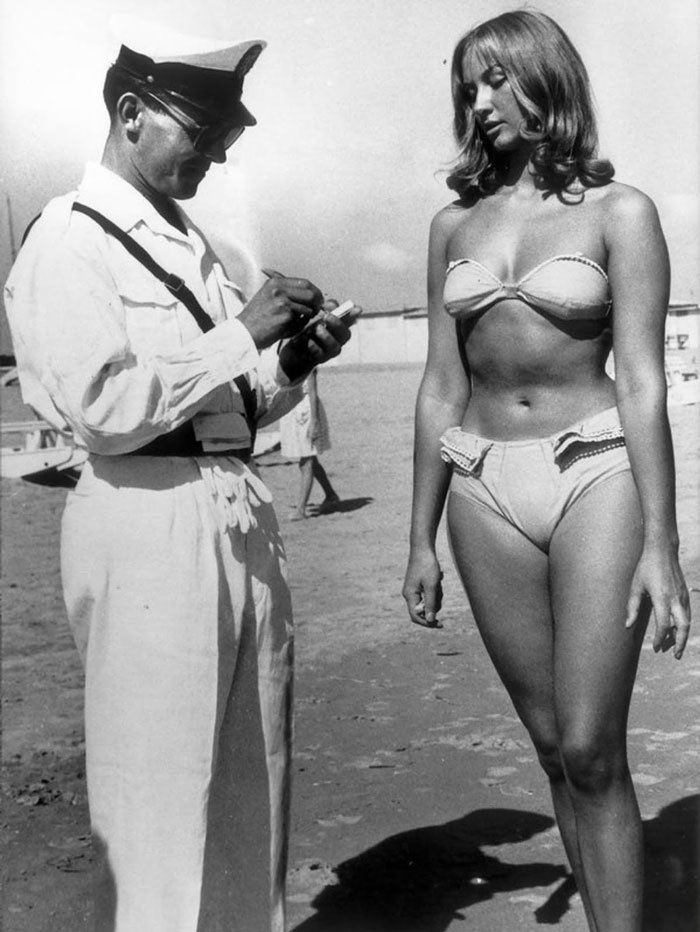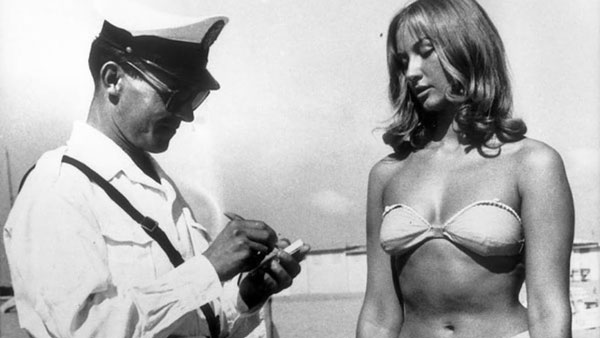Sunglasses helps a lot in the “ticket writing” process.

The bikini was invented by French engineer Louis Réard. He coined the named in 1946. He got the name of the swimsuit design from Bikini Atoll, where the testing on the atomic bomb took place.
Réard would later describe the bikini as a “two-piece bathing suit which reveals everything about a girl except for her mother’s maiden name”.
Despite initial success of the bikini, women around the world did not fully embraced the daring fashion for one reason and another. They were stuck to wearing traditional one-piece swimsuits. So the creative designer Réard went back to designing and selling orthodox knickers.
In 1957, fashion magazine Modern Girl Magazine stated that “it is hardly necessary to waste words over the so-called bikini since it is inconceivable that any girl with tact and decency would ever wear such a thing”.
The bikini was banned from beaches and public places on the French Atlantic coastline, Spain, Italy, Portugal and Australia, and was prohibited or discouraged in some US states.
The Vatican declared it sinful. The United States Motion Picture Production Code, also known as the Hays Code, enforced from 1934, allowed two-piece gowns but prohibited the display of navels in Hollywood films.
But thanks to common glamour shots of popular actresses and models on either side of the Atlantic who played a large part in bringing the bikini into the mainstream.
During the 1950s, Hollywood stars like Rita Hayworth, Elizabeth Taylor, Ava Gardner, Tina Louise, Marilyn Monroe, Lana Turner, Esther Williams, and Betty Grable took advantage of the risqué publicity associated with the bikini by posing for photos wearing them.
Pin-ups of Hayworth and Williams in costume were especially widely distributed in the United States.
By the end of the century, the bikini had become the most popular beachwear in the world. According to French fashion historian Olivier Saillard, this was due to “the power of women, and not the power of fashion”.
The historian said: “The emancipation of swimwear has always been linked to the emancipation of women” though one survey indicates 85% of all bikinis never touch the water.

